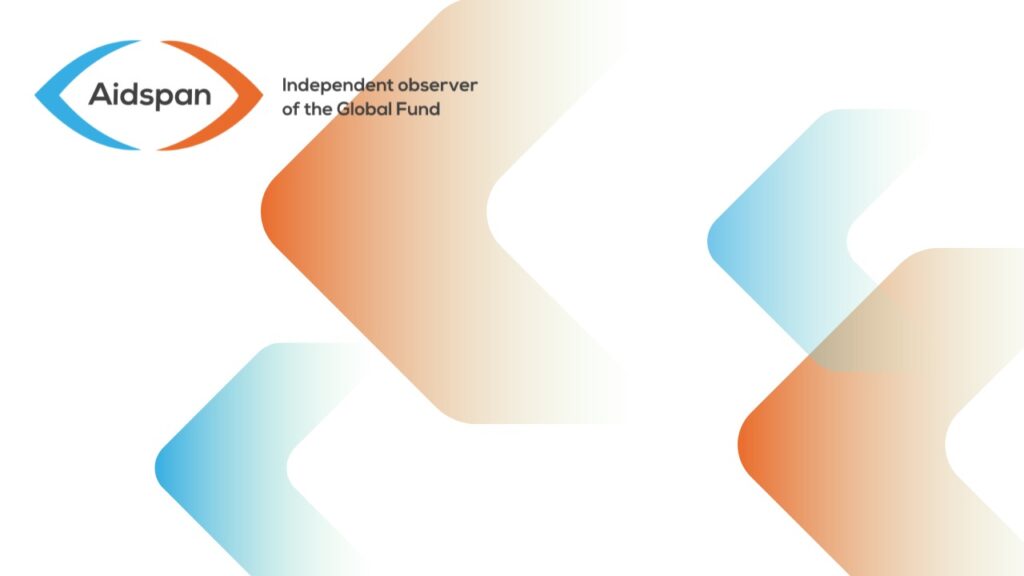
GFO Issue 100, Article Number: 1
N/A
ABSTRACT
ABSTRACT
The TRP has provided some important guidance on what can lead it to recommend that a Global Fund proposal be funded or not funded. This guidance is much more explicit than the TRP has provided in the past.
The Fund's Technical Review Panel (TRP) has provided some important guidance on what can lead it to recommend that a Global Fund proposal be funded or not funded. This guidance, which is much more explicit than the TRP has provided in the past, is buried deep in a report prepared for last month's Global Fund Board meeting. The report, entitled, "Report of the Technical Review Panel and the Secretariat on Round 8 Proposals," is available under "TRP Report to the Board" at www.theglobalfund.org/en/board/meetings/eighteenth/documents.
In the report, the TRP listed a number of factors that it said constitute "the minimum fundamental prerequisites for a recommendation for funding."
Although the prerequisites listed below have not been adopted as formal Global Fund policy, they nevertheless constitute important guidance for applicants preparing proposals for Round 9 (and beyond) because they provide insight into the way the TRP evaluates proposals.
The prerequisites listed by the TRP (and we quote them exactly as written) are as follows:
- A disease proposal that is based upon and responds directly to the current, documented, epidemiological situation;
- A coherent strategy that flows in a consistent order throughout the proposal – with the implementation plans having the same objectives, program areas ('Service Delivery Areas'), and interventions/activities as are stated in the budget, the work plan, the 'Performance Framework';
- A robust gap analysis, both programmatic and financial, that accounts for the full extent of existing resources (including those planned and/or reasonably anticipated based on past practice) and not merely signed arrangements;
- Clear and realistic analysis of implementation and absorptive capacity constraints (whether disease specific or broader health systems) that relate directly to the in-country social, environmental and other contexts;
- Logical strategies to address capacity constraints, whether through the existing funding application, or through other domestic or partner supported initiatives (which are also subject to performance assessments and adjustments);
- Implementation arrangements that recognize and respond to the need to broaden service delivery channels to multiple sectors to achieve universal access to prevention, treatment, and care and support services for people most affected;
- Demonstrated effort to address the more challenging drivers of, especially, the HIV epidemic in ways that will have a meaningful impact on preventing further infections;
- A clear plan for how to monitor activities and evaluate the impact of interventions;
- A budget that is sufficiently detailed to allow the costs of activities to be assessed;
- A workplan that makes clear the timing and sequencing of activities and responsibilities for each activity; and
- Planned outcomes (included as indicators in the 'Performance Framework') that address and respond to current epidemiological data, and demonstrate that the incremental investment of additional Global Fund resources will improve disease specific and broader health outcomes for those most at risk.
The TRP said that by dealing effectively with all these prerequisites, an applicant will demonstrate to the TRP that it "has a clear need for the additional resources, and has planned its funding request in a way that will supplement and strengthen in-country responses to the three diseases."
Significantly, the TRP added that "addressing weaknesses in earlier 'Category 3' proposals is also an important, but not determining factor, as to whether a proposal is recommended for funding."
The TRP went on to provide a number of observations on Round 8 proposals. These are discussed in the next article.
- A disease proposal that is based upon and responds directly to the current, documented, epidemiological situation;
- A coherent strategy that flows in a consistent order throughout the proposal – with the implementation plans having the same objectives, program areas ('Service Delivery Areas'), and interventions/activities as are stated in the budget, the work plan, the 'Performance Framework';
- A robust gap analysis, both programmatic and financial, that accounts for the full extent of existing resources (including those planned and/or reasonably anticipated based on past practice) and not merely signed arrangements;
- Clear and realistic analysis of implementation and absorptive capacity constraints (whether disease specific or broader health systems) that relate directly to the in-country social, environmental and other contexts;
- Logical strategies to address capacity constraints, whether through the existing funding application, or through other domestic or partner supported initiatives (which are also subject to performance assessments and adjustments);
- Implementation arrangements that recognize and respond to the need to broaden service delivery channels to multiple sectors to achieve universal access to prevention, treatment, and care and support services for people most affected;
- Demonstrated effort to address the more challenging drivers of, especially, the HIV epidemic in ways that will have a meaningful impact on preventing further infections;
- A clear plan for how to monitor activities and evaluate the impact of interventions;
- A budget that is sufficiently detailed to allow the costs of activities to be assessed;
- A workplan that makes clear the timing and sequencing of activities and responsibilities for each activity; and
- Planned outcomes (included as indicators in the 'Performance Framework') that address and respond to current epidemiological data, and demonstrate that the incremental investment of additional Global Fund resources will improve disease specific and broader health outcomes for those most at risk.
